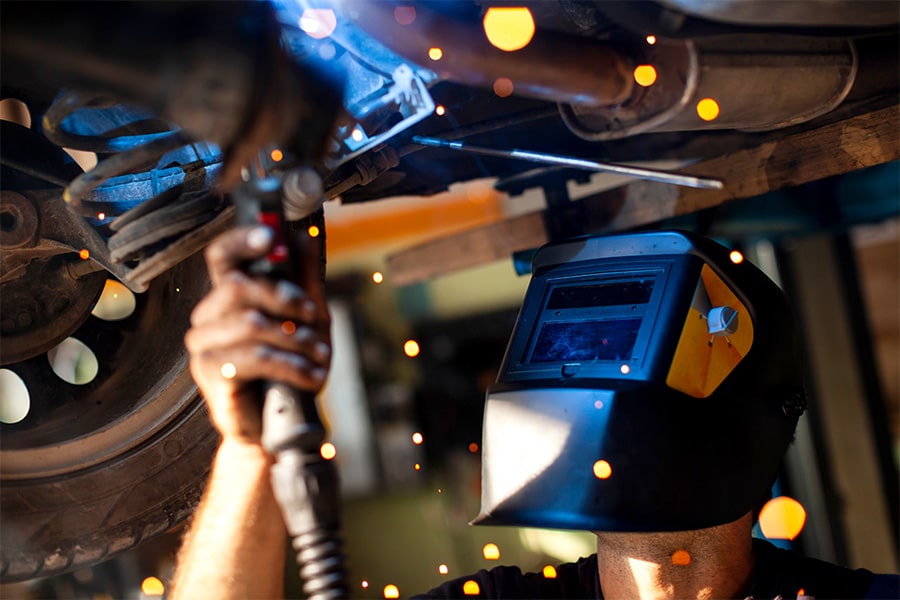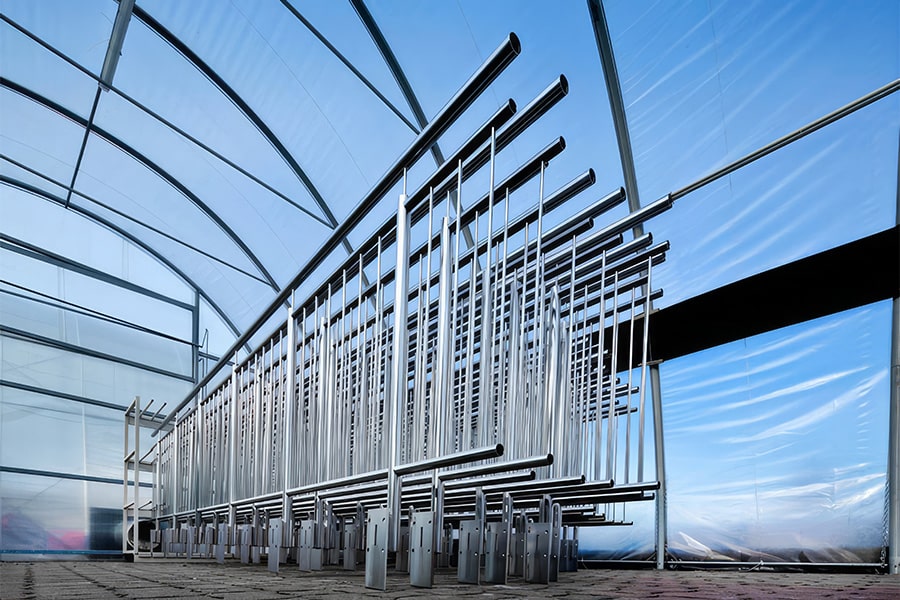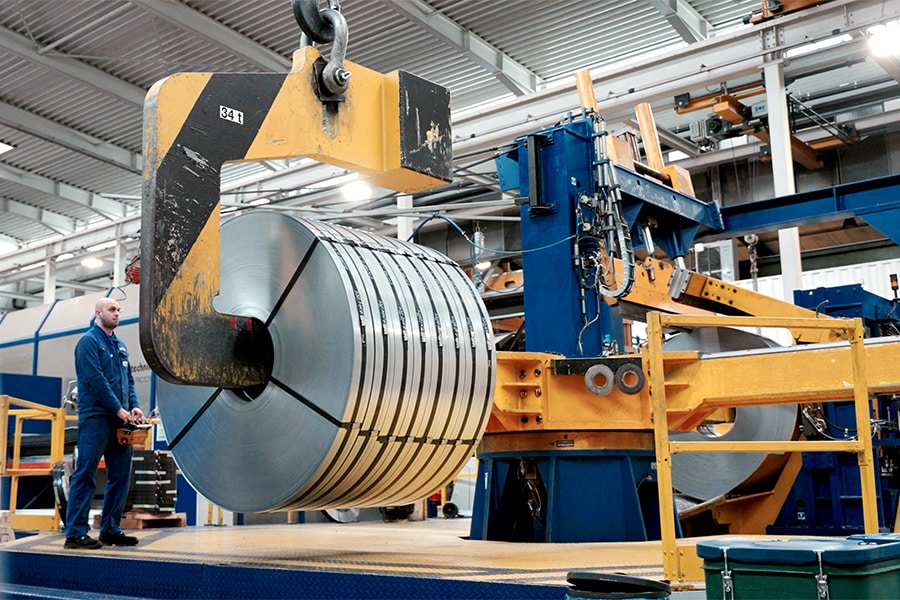
Always a perfectly fitting weld seam with robotic welding
Economical automated welding means that each weld must fit precisely. The right technology ensures that tolerances on components are recognized and compensated. The seam-following sensors from ABICOR BINZEL's iSENSE TRACK ARC series are true experts in this. They are the eyes of the robot.
ABICOR BINZEL's iSTR ARC seam tracking sensors recognize even the slightest deviations on the part and provide the guidance machine or welding robot with up-to-date data on the position of the seam to be welded. The system then adjusts the trajectory of the welding gun in real time. These sensors can be used to compensate for thermal deformation and deviations that occur during the preparation of components.
All seam tracking sensors of the iST ARC series operate on the principle of laser triangulation: the sensor head projects a laser line onto the surface of the workpiece, the reflection is recorded using a camera inside the sensor head, the CMOS camera. The camera signals are evaluated using image processing algorithms and transmit information about the position and condition of the joint to be welded to the control of the guide machine or welding robot.



The sensor head can be replaced without tools, and thanks to the dovetail flange, position reproducibility is very high.
Image processing in the sensor head
With the iST ARC seam tracking sensors, the entire image processing technology is integrated into the sensor head. This eliminates the need for a process computer. This saves space in the robot cell. The so-called breakout board forms the interface between the sensor head and the guide machine or robot and can be easily accommodated in the control cabinet.
Power supply + data in one cable
Both power supply and data communication between the sensor head and the breakout board take place via only a single connection cable. In this way, additional interfaces and thus sources of errors are minimized.
Assistance system for easy installation
A nice, practical feature is the optional compact and robust GIO control element - the so-called Graphical Interactive Operator Device. This allows necessary adjustments to the seam settings to be made while standing right next to the welding robot.
Laser intensity automatically controlled
The automatic gain control - Automatic Gain Control - automatically adjusts laser intensity, camera shutter speed and other parameters. This greatly simplifies the setting of seam parameters and avoids suboptimal parameterization.
Easy maintenance and repair
Maintaining and possibly repairing the iST ARC is a simple matter. The sensor head can be replaced without tools and, thanks to the dovetail flange, position reproducibility is very high. If necessary, the internal protective glasses of the laser and camera aperture can be replaced directly on site.
Offline service for optimizations
The performance of your installed iST ARC can be improved via offline optimization: you send us your recorded weld seam information, we send you back an optimized parameter set. Downtime or expensive interventions can thus be significantly reduced.
The seam tracking sensors of the iST ARC series in a nutshell:
- decks, with a horizontal field of view from 15 to 50 mm,
a broad scope of application
- follow, depending on the sensor model, obtuse seams with a minimum gap width of 0.1 mm
- require, thanks to image processing directly on the sensor head, no additional external process computer, saving space in the control cabinet
- can be used for all common metals, such as steel, stainless steel and aluminum
- enable reliable seam tracking thanks to flexible
image processing algorithms, including for seams with curved parts and for multilayer welding
- reduce finishing costs and reject rate
for automated MIG/MAG welding and TIG welding
- can, via a compact and robust control element, be easily set and operated directly in the welding cell
- are equipped with protective lenses and a so-called cross
jet to protect the optical elements (camera and laser) from contamination of the welding process
- are compatible with most common robot brands and
PLC-controlled machines.



